17 December, 2000

Several people have sent me questions about waste disposal here at the Pole. So I went to John Wright who is in charge of mining operations. Mine shafts, tunnels, 20 feet under the surface will be used to carry the waste water and sewage to the empty chambers left after ice has been melted to produce drinking water. These "wells" are upwards of 400 feet deep in the ice and will give the station another twenty-five years of storage. The new tunnel system starts fairly close to the Elevated Dorm structure. Actually just to the right of the heavy equipment parking area is the opening to the pit.

As you walk into the pit, the height of the walls is impressive as is the turbine snow blower at the end of the telescoping discharge tube that will toss the mined snow over the top of the pit. As the mining machine moves forward the discharge pipe telescopes to meet the increased length of the tunnel.
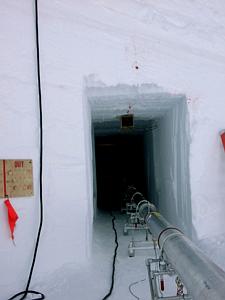
Entering into the main tunnel, you can see the telescoping discharge pipe and the very rectangular shape of the machine cutter. It is somewhat a strange feeling walking into a tunnel under the snow. I inquired about stability and John said that these walls were far more stable than many of the "hard rock" mine tunnels he had worked in.
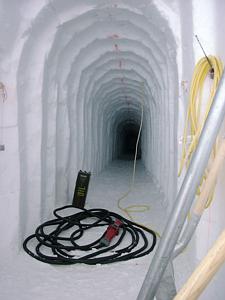
About twenty feet into the main tunnel is a hand dug tunnel that reaches 300 feet toward the new station construction. This tunnel was dug with electric chain saws a banana sled and shovels by three men working in 12 hour shifts. The men were able to dig about twenty feet per shift. You may wonder why they were digging by hand? The mechanical tunneling machine was broken and the part was slightly delayed in shipping. According to John the mechanical tunneling machine is down about 58% of the time. That is actually not too bad considering the conditions at the Pole.
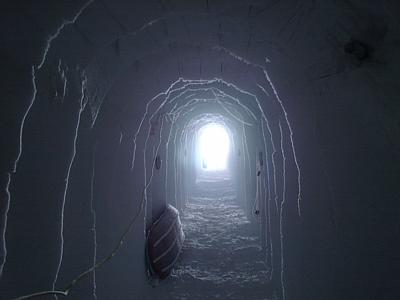
After walking to the end of the hand dug tunnel I was taken by the play of the light on the walls. It was very eerie to be in such a cold dark place where only the sound was that of our own breathing. If you look carefully along the left wall you will see one of the banana sleds that was used to move the cuttings out to the spoil pile.

After being underground for over an hour at the average yearly temperature of -50 degrees F, I came up into the light and was told that I had frosted up sufficiently. I had to take a self portrait to capture this frosty memory.
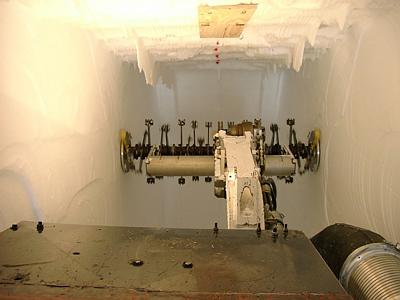
Close to the front of the main tunnel we found the tunneling machine. The rotating head moves up and down, cutting the face of the tunnel. The cut snow is removed by a standard snow blower that is on the from of the tunneling machine.
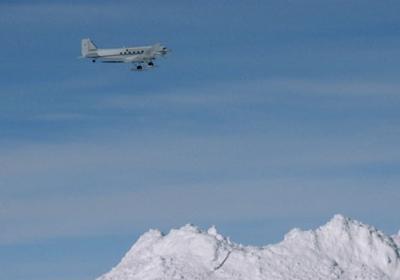
Another treat today was the arrival of a DC-3 "Sky train". It was really something to see this beautiful old bird still flying and working in one of the most severe environments on earth.
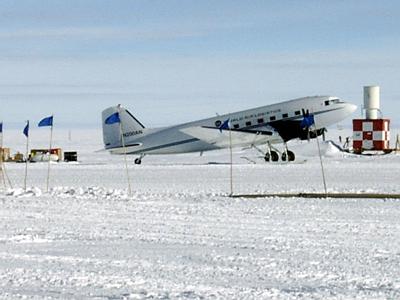
The DC-3 is here at Pole to take the AGO (Antarctic Geophysical Observatory) group to their remote sites. This old plane can deliver the scientists and their cargo to locations where the Air Guard LC-130's can't operate.
Contact the TEA in the field at
.
If you cannot connect through your browser, copy the
TEA's e-mail address in the "To:" line of
your favorite e-mail package.
|
